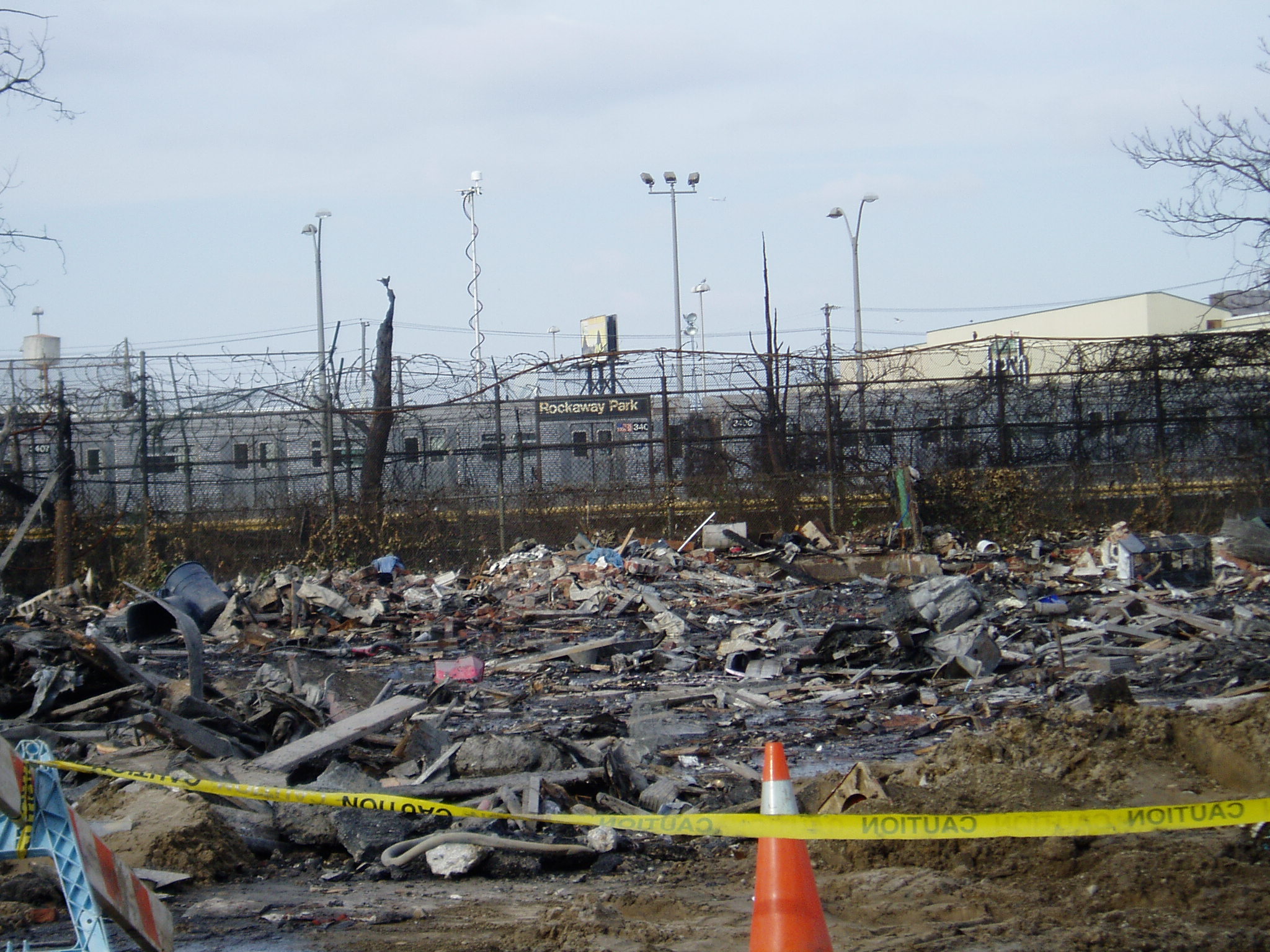My first instinct was to rummage through the trash, see if there was anything I would like.
I can’t help it, that’s how I react to large piles of garbage.
I’d have to remind myself several times that this wasn’t actually garbage. No one had thrown out these items. Strewn across a lawn that looked mostly dead, the broken and dirty possessions represented both the hope and despair of someone’s life after a natural disaster.
Old tea cans. A broken, rusted chandelier. The top of an arcade game. Sea shells. Single shoes, yellow and purple. A milk case full of old books that had to be trashed. A woman in distress paced back and forth along her large colonial porch, dodging volunteers as they cleaned her TV tables.
The path of destruction that had been laid in the wake of Hurricane Sandy is obvious on every street corner, every curb and on every house. Tape is still placed over windows to hold them together. Scrap heaps line the streets. Police and the National Guard roam the sidewalks, direct traffic or drive through the congested roads. Homeowners and volunteers don facemasks, rubber boots and gloves.
I heard that there’s a curfew in effect when it falls dark.
Three weeks ago, water surged as part of the hurricane and covered some parts of New York City. Many residents of Stanton Island, the Jersey Shore, Coney Island, the Rockaways and Long Island are still without power.
One side of Rockaway Peninsula faces Jamaica Bay and the other faces the ocean. Hurricane Sandy completely covered the peninsula with salt water.
I went to help relief efforts co-ordinated by Occupy Sandy, a sophisticated response team that has grown out of Occupy Wall Street. Volunteers are dispatched to peoples’ homes where people have asked for help.
On my first day, we gutted a home located in a low income, mostly racialized neighbourhood. The house had no basement so the water rose at least three feet on the first floor. We started by throwing out furniture. The large screen TV was to be saved. The oven still had water inside of it.
My team leader, a man from Saskatoon, showed me how to demolish a wall.
We took hammers and crowbars to the waterlogged drywall. We pulled it out and removed the insulation behind. Each swath of insulation was soaked up to a foot from the bottom in dirty brown water.
Anything that wasn’t structural was torn out. Doors, carpet, walls, linoleum and debris were hauled out and dropped onto our scrap pile.
On day two, after hours of chiseling tile off a basement floor, we were told that there’s asbestos in the basement. “You OK with that?” we were asked.
We stayed and chiseled on.
Like all the volunteers, we chose to accept the risks, unlike the residents of the peninsula though, who have no choice but to live through the chaos.
The Rockaways is a mix of working class families and summer homes for people in New York City. The woman who lived in the mostly white neighborhood had electricity (turned on this past weekend) while the man who lived in the mostly racialized neighborhood still hadn’t had his house gutted.
His electricity will remain off until his house can be inspected and deemed safe for power.
The man next door finally had his car towed. It was black and orange and looked as if he had put a lot of work into it. On the window was text that said “Orange you jealous?”
There was a layer of filth and dead plants covering his engine, just under the hood.
The inside of his garage looked as if it had not been touched since the flooding and it stank of mould.
There is so much to say about what I witnessed there in just a few days that I can’t capture it in one post. I will have to write separately about Occupy Sandy, the provision of services and food, the failures of the state to look after its citizens and some of the conversations that I was lucky to have.
Look forward to those accounts over the next few days.
What was the most clear is that people will fill in the gaps to provide for each other when left by the state to fend for themselves. People will work hard, learn new skills and donate their time to help others.
As Western nations shrink the size of their governments through austerity measures, and as little continues to be done about climate chaos, citizen-led responses to disaster relief will continue to be critical. They will need to be strong enough to confront the disaster capitalists who seek to profit off people when they are most desperate.
I worked alongside seven Canadians this weekend. If you have a weekend to spare, I encourage you to go and help with the relief efforts. You can find ways to help out at the Occupy Sandy website.



